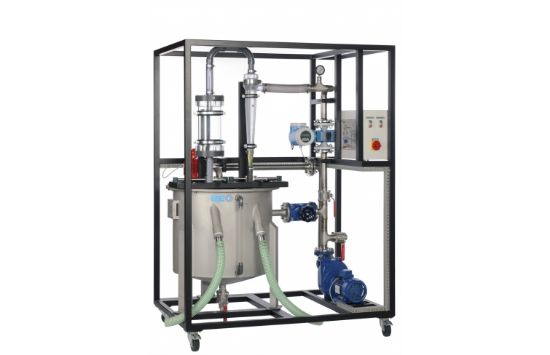Hydrocyclones can be used to separate solids suspended in liquids. In CE 225, the suspension is prepared in a tank. A pump delivers the suspension into the tangential inlet of the cyclone. In the cyclone a downward primary vortex is created. The downward taper causes the vortex to reverse. In the middle it moves as a secondary vortex back up towards the vortex finder, where the suspension emerges from the cyclone, having lost the coarse material in it. Inside the cyclone an air core is formed. The centrifugal forces cause the coarser solid particles in the primary vortex to be enriched. They are discharged with the underflow at the apex nozzle. It is mainly the fine material that is discharged from the top.
The flow rate in the inlet is adjusted by a valve in a bypass and measured with an electromagnetic flow meter. Sampling points are installed at the underflow and overflow. The flow rates in them can be determined by means of a bucket and a stopwatch. To determine the solid concentration, a balance and a drying chamber are recommended. Using a suitable analysis device (such as a diffraction spectrometer), a separation function can be produced and the separation size determined. Quartz powder and diatomite are recommended for use as the solid.
The trainer was developed in cooperation with the Department of Mechanical Process Engineering at Anhalt University of Applied Sciences.

